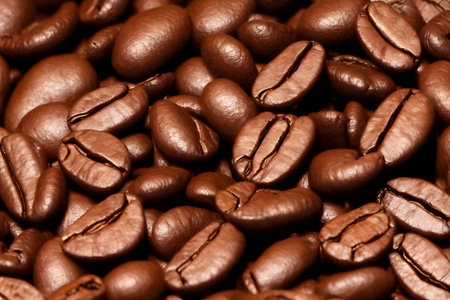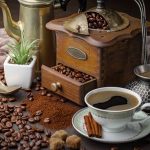1. Introduction to Coffee Cocktails
Coffee cocktails are where the rich, bold flavors of coffee meet the creative, spirited world of mixology. Over the years, these drinks have become staples in bars and restaurants across the U.S., thanks to their unique ability to blend caffeine kick with boozy warmth. For bartenders looking to expand their skill set and impress guests, mastering classic coffee cocktails is a must.
The origins of coffee cocktails go way back, with some dating as far back as the 19th century. Many were born in cold-weather regions where people craved something warm and comforting — but with a little extra punch. Others were created as after-dinner treats that doubled as both dessert and drink. Today, they’ve evolved into versatile beverages that can be served hot or iced, morning or night.
Why Every Bartender Should Know These Drinks
Whether youre working at a cozy neighborhood bar or a trendy downtown spot, knowing how to make great coffee cocktails gives you an edge. These drinks are crowd-pleasers and conversation starters. They also work well on brunch menus, dessert pairings, or as signature winter specials.
Main Reasons to Learn Coffee Cocktails:
| Reason | Description |
|---|---|
| Versatility | Can be served hot or cold; perfect for any season or time of day. |
| Cultural Appeal | Coffee is deeply rooted in American culture; combining it with alcohol adds a fun twist. |
| Dessert Pairing | Makes an ideal after-dinner option for guests who want something sweet and boozy. |
| Caffeine Boost | The added kick from coffee keeps guests energized during long nights out. |
| Aesthetic Value | The layered look and garnishes make them Instagram-worthy drinks. |
A Blend of Flavor and Functionality
Coffee cocktails aren’t just about taste—they’re about experience. From the aroma of freshly brewed espresso to the creamy finish of whipped cream or frothy milk, each element plays a role in making these drinks memorable. As we dive into the top 15 classic coffee cocktails every bartender should know, youll discover recipes that are timeless, easy to learn, and sure to impress your patrons.
2. Essential Ingredients and Tools
If you want to master the art of classic coffee cocktails, it all starts with having the right ingredients and tools on hand. From bold espresso shots to smooth coffee liqueurs and reliable bar gear, here’s a breakdown of what every bartender needs to craft consistent, high-quality drinks.
Coffee Bases You’ll Use the Most
Different coffee cocktails call for different types of coffee. Whether youre mixing up an Espresso Martini or a Cold Brew Negroni, here are the most essential types:
| Coffee Type | Description | Common Uses |
|---|---|---|
| Espresso | Strong, concentrated coffee made by forcing hot water through finely-ground beans. | Espresso Martini, Irish Coffee |
| Cold Brew | Slow-steeped coffee brewed in cold water over 12–24 hours for a smoother, less acidic flavor. | Cold Brew Old Fashioned, Coffee Tonic |
| Brewed Coffee (Drip or French Press) | Regular strength coffee used when a lighter profile is desired. | Café Amaretto, Coffee Milk Punch |
Coffee Liqueurs & Spirits That Pair Best
The soul of any great cocktail lies in its balance of flavors. These spirits and liqueurs are go-to choices when crafting coffee-based drinks:
| Liqueur/Spirit | Description | Popular Cocktails |
|---|---|---|
| Kahlúa | A sweet coffee liqueur with hints of vanilla and caramel. | White Russian, Black Russian |
| Tia Maria | A darker, slightly more bitter coffee liqueur from Jamaica. | Espresso Martini, Revolver |
| Baileys Irish Cream | A blend of Irish whiskey and cream with cocoa and coffee notes. | B-52 Shot, Baileys Coffee |
| Bourbon | A rich American whiskey with notes of vanilla and oak that pair well with coffee’s boldness. | Kentucky Coffee, Bourbon Espresso Flip |
| Rum (Dark or Spiced) | Adds warmth and complexity with molasses-like sweetness. | Café Brûlot, Caribbean Coffee |
Must-Have Bar Tools for Coffee Cocktails
You don’t need a full bar setup to get started—but a few key tools will make your life much easier and your drinks more consistent:
- Espresso Machine or Moka Pot: For pulling strong espresso shots needed in most recipes.
- Cocktail Shaker: Essential for shaking up chilled drinks like the Espresso Martini.
- Muddler: Useful when infusing herbs or sugar into hot coffee cocktails.
- Jigger: Accurate measuring ensures balanced flavors every time.
- Coffee Grinder: Freshly ground beans can make all the difference in taste.
- Coffee Scale: Precision matters—especially when dialing in cold brew ratios.
- Citrus Zester or Peeler: Perfect for garnishing with citrus twists for aroma and style.
Taste Tip: Balance Is Everything
The best coffee cocktails strike a harmony between bitterness, sweetness, and spirit strength. Don’t be afraid to experiment—but always start with quality ingredients and precise measurements. That’s how pros make it look easy—and delicious!
![]()
3. Iconic Coffee Cocktails and Their Stories
Coffee cocktails have earned their place in bars around the world, blending rich coffee flavors with the boldness of spirits. Some of these drinks have fascinating backstories that add to their charm. Here’s a closer look at the most iconic coffee cocktails every bartender should know.
Irish Coffee
Origin: Ireland, 1940s
Story: Created by Chef Joe Sheridan at Foynes Airport to warm up cold travelers, this drink combines hot coffee, Irish whiskey, sugar, and a layer of cream. It became internationally famous after travel writer Stanton Delaplane brought it to the Buena Vista Café in San Francisco, where it’s still served today.
Espresso Martini
Origin: London, 1980s
Story: Invented by legendary bartender Dick Bradsell when a customer asked for something to “wake me up and f*** me up.” He combined vodka, freshly brewed espresso, and coffee liqueur to create this now-classic cocktail served in a martini glass.
Black Russian
Origin: Brussels, 1949
Story: Crafted by bartender Gustave Tops at the Hotel Metropole for the U.S. ambassador to Luxembourg. This simple mix of vodka and coffee liqueur laid the groundwork for many other coffee-based drinks.
White Russian
Origin: United States, 1960s
Story: A creamier twist on the Black Russian, this cocktail gained cult status thanks to the 1998 film “The Big Lebowski,” where it was famously preferred by “The Dude.”
Café Amore
Origin: Unknown (popularized in American bars)
Story: A romantic blend of Cognac and amaretto with hot coffee, topped with whipped cream. Often enjoyed as an after-dinner indulgence.
Coffee Cocktail Comparison Table
| Cocktail Name | Main Ingredients | Served | Notable For |
|---|---|---|---|
| Irish Coffee | Coffee, Irish Whiskey, Sugar, Cream | Hot | Smooth layers and warming effect |
| Espresso Martini | Vodka, Espresso, Coffee Liqueur | Cold | Bitter-sweet kick with caffeine boost |
| Black Russian | Vodka, Coffee Liqueur | Cold | Simplicity and strong flavor profile |
| White Russian | Vodka, Coffee Liqueur, Cream/Milk | Cold | Creamy texture and pop culture fame |
| Café Amore | Cognac, Amaretto, Coffee, Whipped Cream | Hot | Dessert-like richness and almond notes |
The stories behind these classic coffee cocktails not only add character but also give bartenders context when crafting or recommending them. Knowing where they come from helps create a more engaging experience for guests looking for something both comforting and spirited.
4. Techniques for Brewing and Mixing
When it comes to crafting coffee cocktails, mastering the right techniques is just as important as knowing the recipes. Whether youre working behind a busy bar or hosting a brunch at home, understanding how to brew, mix, and present coffee-based drinks makes all the difference. Here are some key methods every bartender should have in their skillset.
Pulling the Perfect Espresso Shot
A solid espresso shot is the foundation for many classic coffee cocktails like the Espresso Martini or Irish Coffee. Here’s what to keep in mind:
- Grind Size: Fine and consistent—similar to table salt.
- Dose: Typically 18–20 grams of ground coffee for a double shot.
- Extraction Time: Aim for 25–30 seconds.
- Crema: Look for a golden layer of foam that indicates freshness.
Shaking vs. Stirring
Coffee cocktails often require shaking or stirring, depending on the desired texture and clarity. Heres a quick guide:
| Technique | When to Use | Tools Needed |
|---|---|---|
| Shaking | For cocktails with espresso, cream, or syrups—adds froth and chills quickly (e.g., Espresso Martini) | Cocktail shaker, strainer |
| Stirring | For spirit-forward drinks where clarity matters (e.g., Black Russian) | Mixing glass, bar spoon, strainer |
Layering for Visual Appeal
Layered coffee cocktails like the B-52 or Spanish Coffee make a big impression when served. To achieve clean layers:
- Density Matters: Heavier ingredients like liqueurs go on the bottom; lighter ones like cream or foam go on top.
- Pouring Technique: Pour slowly over the back of a spoon to control flow and avoid mixing.
- Glassware Choice: Use clear glasses like snifters or martini glasses to show off layers.
Brew Methods Beyond Espresso
Not every coffee cocktail calls for an espresso machine. Depending on the drink, other brew methods may be more suitable:
| Brew Method | Best For | Flavor Profile |
|---|---|---|
| Aeropress | Iced coffee cocktails or quick hot brews with low acidity | Smooth, rich, low bitterness |
| Cold Brew | Tiki-style cocktails or summer drinks (e.g., Cold Brew Negroni) | Mellow, chocolatey, less acidic |
| Moka Pot | Cocktails needing strong coffee without an espresso machine (e.g., Revolver) | Bitter-sweet, intense flavor similar to espresso |
Tips for Consistency Behind the Bar
- Brew in Batches: Pre-make cold brew or espresso shots during prep hours for speed during service.
- Taste Everything: Coffee flavor can vary by bean and roast—always taste before serving.
- Tidy Presentation: Wipe glass rims and use garnishes like orange zest, whipped cream, or chocolate shavings for extra flair.
Nailing these techniques will help you serve balanced, eye-catching coffee cocktails that impress every time.
5. Serving Tips and Presentation
When it comes to classic coffee cocktails, how you serve them is just as important as how you make them. The right glass, garnish, and temperature can elevate the drinking experience and highlight the rich, bold flavors of coffee mixed with spirits. Here are some simple tips every bartender should keep in mind.
Glassware Matters
Choosing the proper glass enhances both presentation and flavor. Heres a quick guide:
| Cocktail | Recommended Glass |
|---|---|
| Espresso Martini | Martini Glass |
| Irish Coffee | Irish Coffee Mug or Heatproof Glass |
| Black Russian | Old Fashioned Glass (Rocks Glass) |
| White Russian | Rocks Glass |
| Café Amore | Coffee Mug or Toddy Glass |
Garnishing Like a Pro
A good garnish not only looks great but also adds aroma and flavor. Use these common garnishes to enhance your coffee cocktails:
- Coffee Beans: Classic for espresso-based drinks like the Espresso Martini.
- Whipped Cream: Perfect for warm drinks like Irish Coffee or Café Brûlot.
- Cinnamon Stick or Grated Nutmeg: Adds warmth and spice—great for holiday-style drinks.
- Orange Peel: Pairs well with bourbon- or brandy-based coffee cocktails.
- Chocolate Shavings or Syrup Drizzle: Ideal for dessert-style drinks like a Mocha Martini.
Temperature Control Is Key
The serving temperature can greatly affect flavor and mouthfeel. Here’s what to keep in mind:
- Iced Coffee Cocktails: Shake or stir with ice and serve immediately in chilled glasses.
- Hot Coffee Cocktails: Pre-warm mugs or heatproof glasses before pouring to maintain temperature longer.
- Avoid Overheating: For hot drinks, don’t use boiling water—ideal temp is around 160–170°F to preserve alcohol flavor and avoid bitterness.
Nailing the Final Touches
The last step is all about presentation. Wipe down the rim of the glass, use fresh ingredients, and always serve with a smile. Coffee cocktails are meant to be enjoyed slowly—make them look as good as they taste!
Bartender Tip:
If youre making multiple orders of the same drink, batch the base (without ice) ahead of time and shake or stir fresh per order. This saves time while keeping quality high.
Your takeaway?
Nail the basics: right glass, right garnish, right temp. It’s these small details that turn a decent drink into an unforgettable one—for both your guests and your bars reputation.


